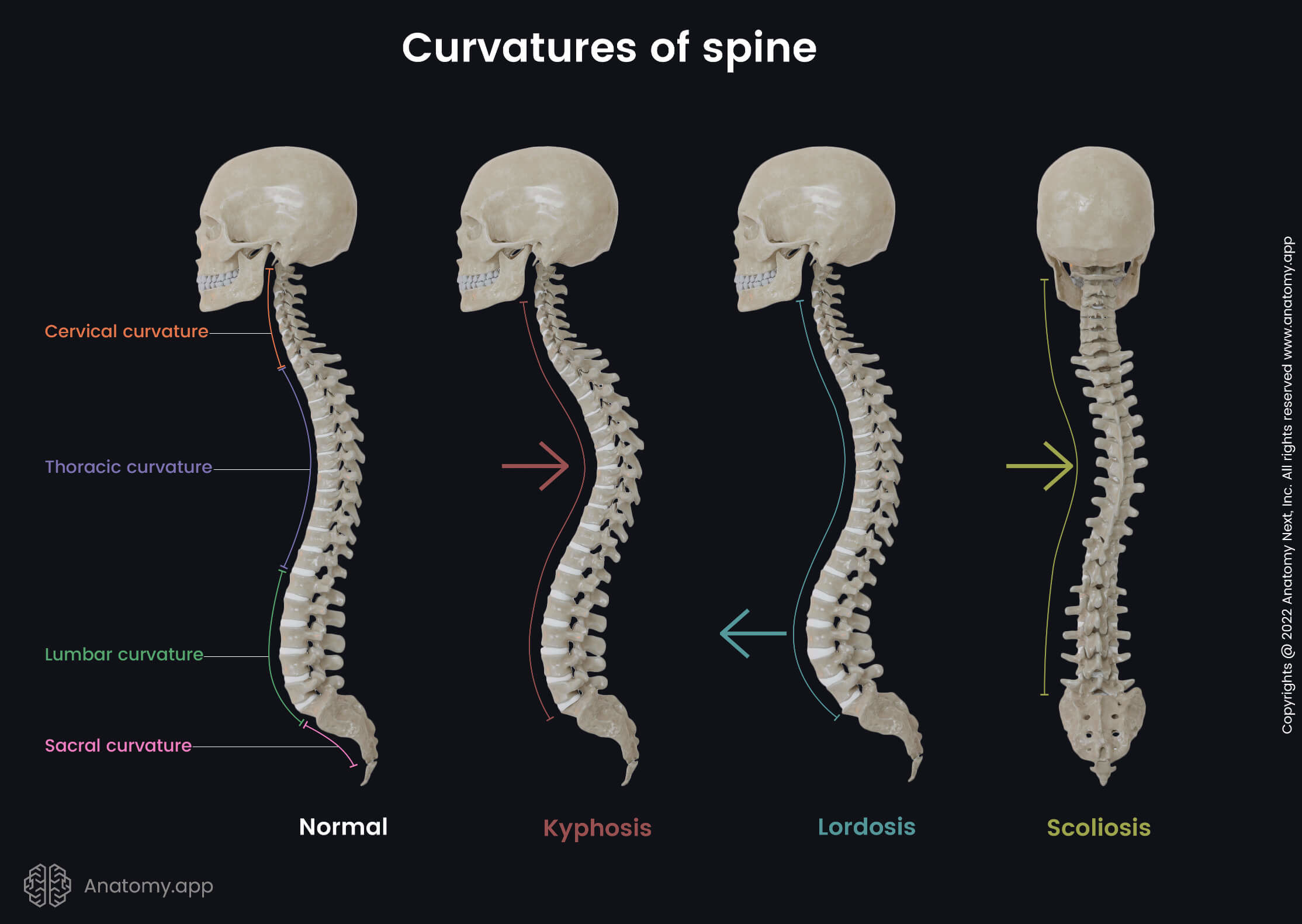- Anatomical terminology
- Skeletal system
- Joints
- Muscles
- Heart
- Blood vessels
- Lymphatic system
- Nervous system
- Respiratory system
- Digestive system
- Urinary system
- Female reproductive system
- Male reproductive system
- Endocrine glands
- Eye
- Ear
Spine
The spine or vertebral column (also known as backbone, spinal column, Latin: columna vertebralis) is a sequence of bones called vertebrae that are separated from each other by intervertebral discs. The spine forms the main axis of the human body.
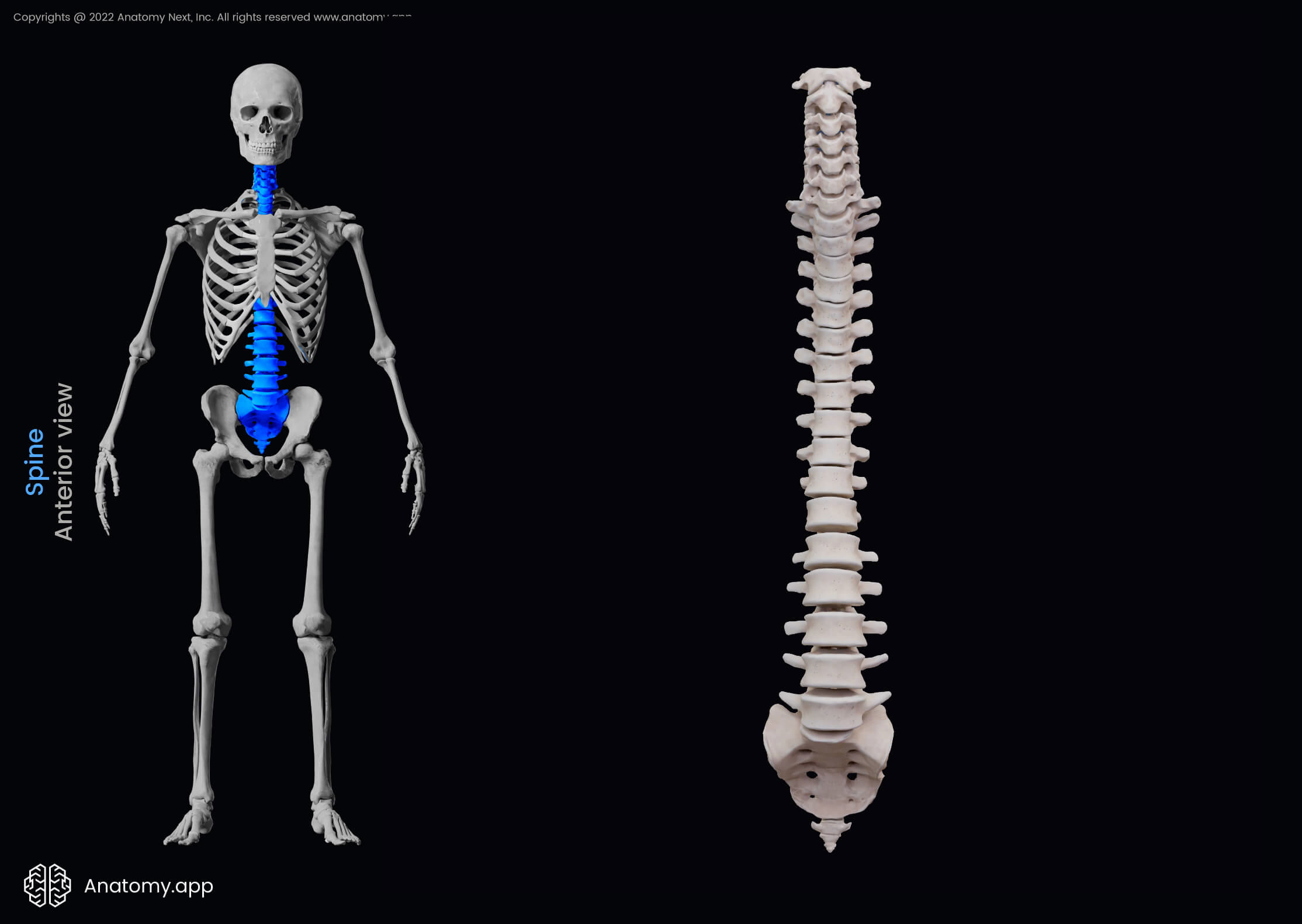
The human spine is flexible and it supports the head, neck, and trunk allowing their movements. It also provides protection for the spinal cord, which is located within the spinal canal that is formed by central holes in the vertebrae.
Normally, there are 32 to 34 vertebrae (singular: vertebra) forming the human spine. There are 24 free vertebrae and 8 to 10 fused vertebrae.
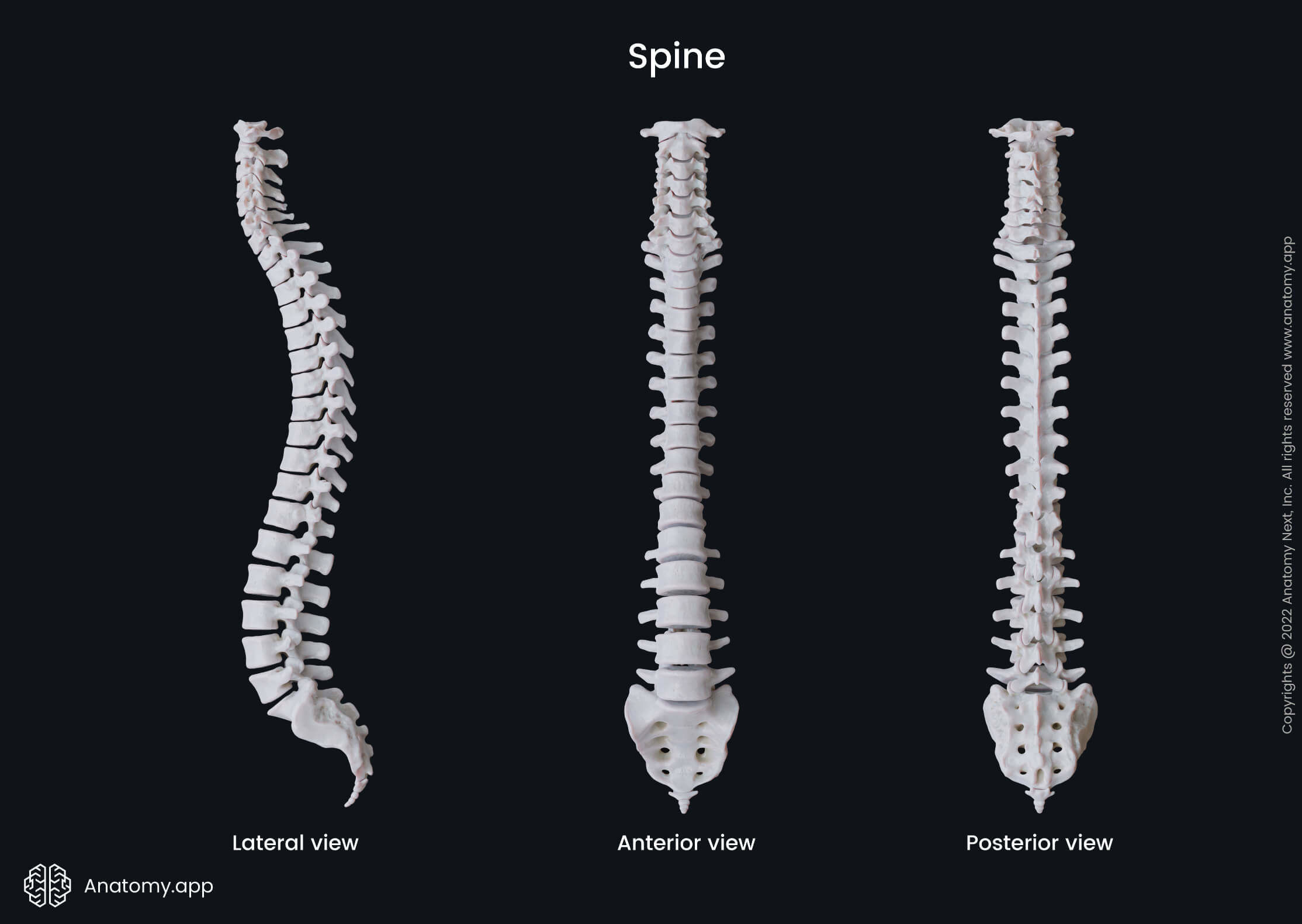
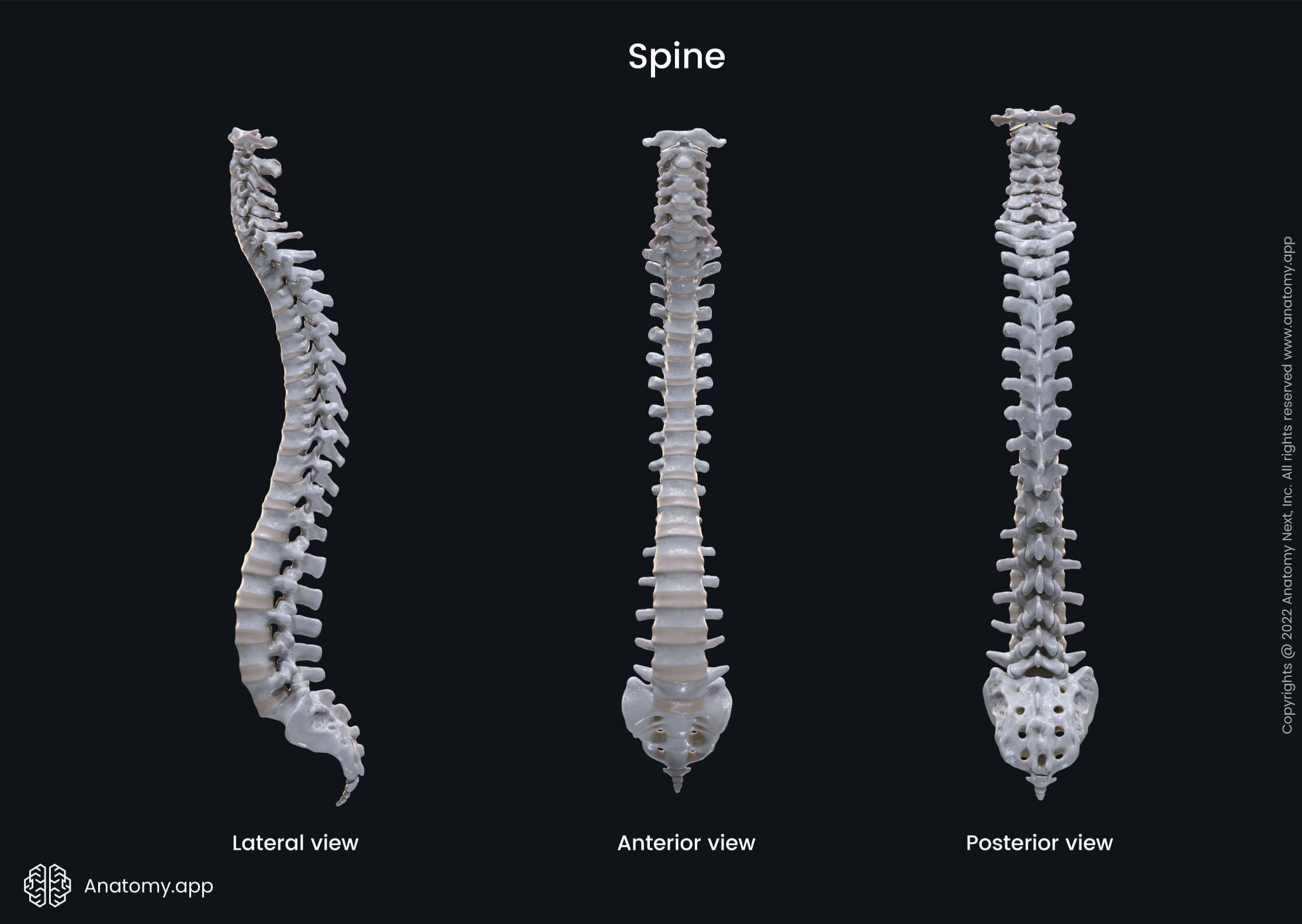
Parts of spine
The vertebral column can be divided into the following parts:
- Cervical part - consists of 7 cervical vertebrae (C1 - C7);
- Thoracic part - consists of 12 thoracic vertebrae (T1 - T12);
- Lumbar part - consists of 5 lumbar vertebrae (L1 - L5);
- Sacral part (sacrum) - consists of 5 sacral vertebrae fused together, forming a single bone - the sacrum;
- Coccygeal part (coccyx) - consists of 3 to 5 fused coccygeal vertebrae, forming a single bone - the coccyx (tailbone).

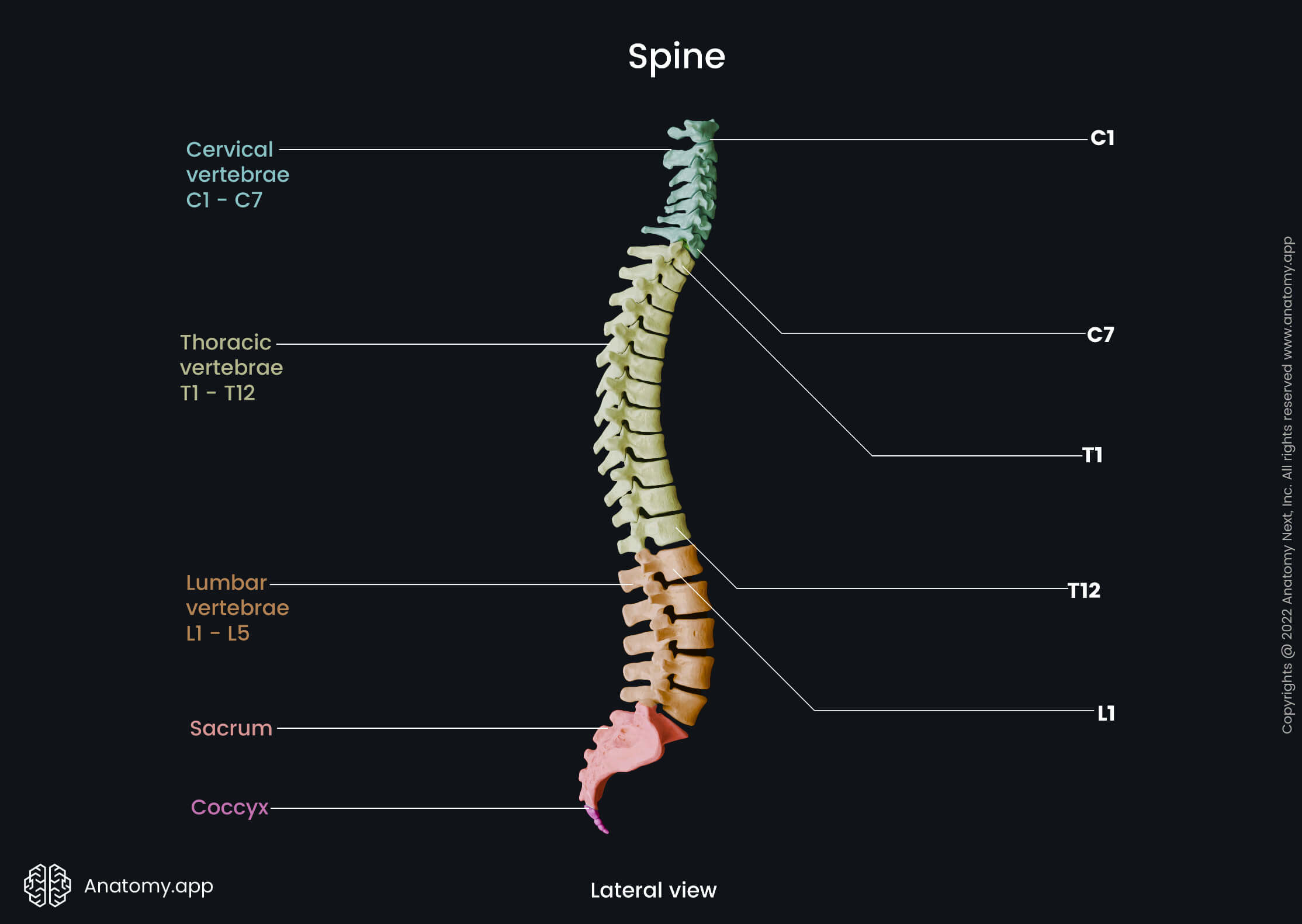
The spine of an adult does not form a straight line, but it has four curves along its way corresponding to parts of the spine (cervical, thoracic, lumbar and sacral). The cervical and lumbar parts of the vertebral column are curved anteriorly, while the thoracic and sacral parts curve posteriorly. These curves increase stability, flexibility of the spine and its ability to absorb shock.
Intervertebral discs
The intervertebral discs are important structures in shock absorption. Intervertebral discs have two primary parts - the annulus fibrosus and nucleus pulposus. The outer portion or the annulus fibrosus consists of many tough laminae of fibrocartilage oriented perpendicular to each other. The inner portion is called the nucleus pulposus and it has a gel like consistency.


The orientation of fibrocartilage of the outer portion allows for multi-directional support for the nucleus pulposus. A herniated disc is a condition in which the nucleus pulposus has breached the annulus fibrosis and may impinge upon a spinal nerve. This, in turn, can result in back pain, pain or sensation in different parts of the body.
Spine curvatures
The spine has four curvatures, two of which are primary and two - secondary. In adults, the thoracic and sacral curvatures are in the same direction as in the fetus and so are called primary curvatures. The secondary curvatures of the adult spine are the cervical and lumbar curvatures. They bend in the opposite direction (concave posteriorly). The secondary curvatures begin to develop after birth as the infant learns to hold up the head (cervical curvature) and to walk upright (lumbar curvature).
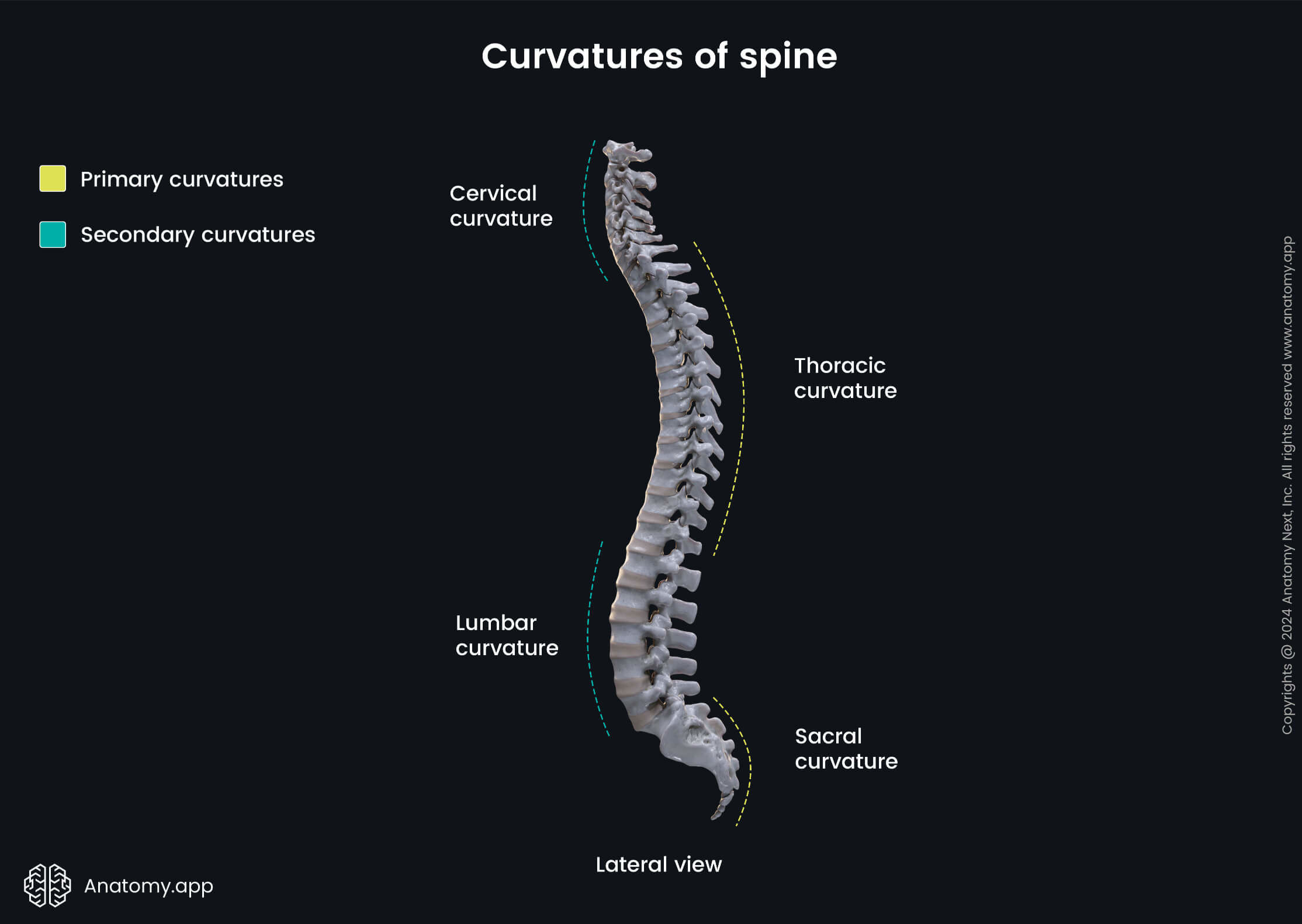
Spinal disease
Disorders affecting the curvatures of the spine are classified as spinal disease (dorsopathy). The three abnormal curvatures are:
- Kyphosis - exaggerated curvature of the thoracic spine (hunched-back);
- Lordosis - exaggerated lumbar curvature;
- Scoliosis - a complex abnormality which presents as an S-shaped spine when viewed from posterior and has a rotational component as well.
